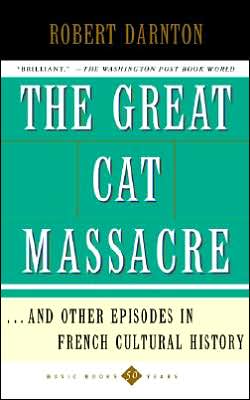Chapter List
1) Peasants Tell Tales: The Meaning of Mother Goose
2) Workers Revolt: The Great Cat Massacre of the Rue Saint-Severin
3) A Bourgeois Puts His World in Order: The City as a Text
4) A Police Inspector Sorts His Files: The Anatomy of the Republic of Letters
5) Philosophers Trim the Tree of Knowledge: The Epistemological Strategy of the Encyclopedie
6) Readers Respond to Rousseau: The Fabrication of Romantic Sensitivity
The work is fairly readable for a general audience, only rarely getting bogged down by scholarly rigor and notation. Because they are entirely separate articles, the reader can skip whole chapters to jump right into specific subjects of interest with no loss of context (though there is a seven page Conclusion to tie them all together). Taken as a whole, it lends a window into the different social strata of French society at a specific time.
For the fiction writer, the utility of such a work come in numerous forms. First it provides a peek into the everyday life of its subjects, not just the major historic events. Additionally, it shows how different levels of society viewed portions of their world and interacted with it. The first chapter demonstrates how different cultures modified universal tales to different ends. Each chapter holds a lesson and a multitude of story ideas for the open mind. Knowing how minds operated in an appropriate time period helps the writer to differentiate characters in a believable way. Knowing what drives them, generates opportunities for conflict and thus story.

No comments:
Post a Comment